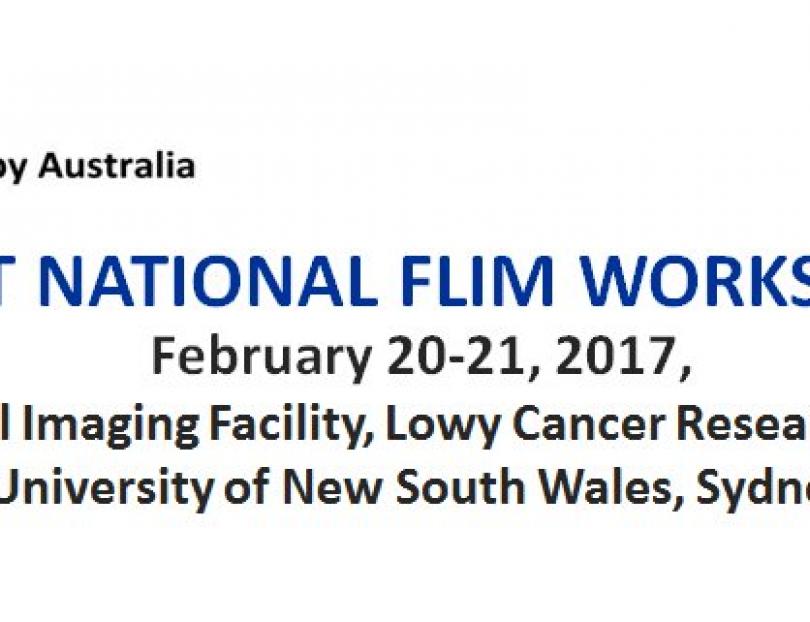The FIRST FLIM workshop will start with a plenary lecture form
A/Prof Trevor Smith from Melbourne University.
Time-resolved emission microscopy – Methods and extended applications
Trevor A. Smith, Ultrafast and Microspectroscopy Laboratories, School of Chemistry & ARC Centre of Excellence in Exciton Science, University of Melbourne
Time-resolved emission microscopy is a powerful approach to provide additional information to that achievable by conventional intensity-only imaging. In addition to providing maps of fluorescence decay behaviour (fluorescence lifetime maps), these methods can be extended beyond “fluorescence lifetime imaging” (FLIM) to map rotational mobility (local viscosity) by collecting emission as a function of polarisation. Phosphorescence can also be used to map the environment of certain lumophores.
There are several methods that can be used to achieve time-resolved emission microscopy when coupled to various modes of microscopy. The various methods will be discussed along with how these methods can be extended to provide additional information. The advantages and disadvantages of each technique will be assessed in relation to implementing these extensions to the technique.
We will report on experiments in which we have applied a range of time-resolved emission microscopy techniques, including FLIM, “phosphorescence lifetime imaging” (PLIM) and fluorescence anisotropy imaging (FAIM) to a wide variety of samples. This includes the intracellular distribution of fluorescent copper and zinc bis(thiosemicarbazonato) complexes, aggregation-induced emission compounds, and non-cellular systems.
Plenary lecture will be followed by an interactive lecture given by
Dr. Alex Macmillan UNSW Sydney on principles and pit falls of FLIM (see below in practicals).
The Workshop will conclude with a series of research talks showcasing not only FLIM application about also summarising the knowledge from the workshop.
Using FLIM to enhance the output of responsive fluorescent sensors
While there are now many sophisticated imaging techniques to study biological systems, chemical tools are needed to gain an understanding of what is happening in the cell, on a molecular level. We are interested in designing small molecule sensors to probe sub-cellular molecular species, especially those with a fluorescence or magnetic resonance output. In particular, we are developing redox-responsive sensors that are able to report on reversible oxidative events in biological systems, and can distinguish transient oxidation events from oxidative stress. We also have an interest in imaging essential and therapeutic metals within cells using selective fluorescent sensors. In our research, we have utilised fluorescence lifetime imaging microscopy in order to observe ratiometric information about chemical systems using our fluorophores.
Studying cell signalling in vivo with FLIM-FRET
Genetically expressed Förster resonance energy transfer (FRET) biosensors are a powerful tool to study the activation of signalling proteins and pathways in living cells. There is a growing awareness, however, of critical differences in the behaviour of cell in native, 3D contexts and 2D cell culture. Our group uses genetically engineered mice expressing FRET biosensors to study signalling in vivo with FLIM. In this talk I will discuss our work using mice expressing biosensors for the small GTPases RhoA and Rac1 and how we address some of the challenges associated with intravital FLIM such as sample motion and tissue autofluorescence using our analysis software FLIMfit. To investigate the spatio-temporal relationship between the regulation of these proteins, which act in concert to regulate cell motility and migration, we have crossed the RhoA and Rac1 mice to generate a dual biosensor mouse. Using a custom multichannel FLIM system we can resolve the activation level of RhoA and Rac1 in the dual mouse on a subcellular level using a novel spectral-lifetime fitting approach.
Blake Smith – Murdoch Childrens Research Institute
Ephrem Sitiwin – UNSW Sydney







